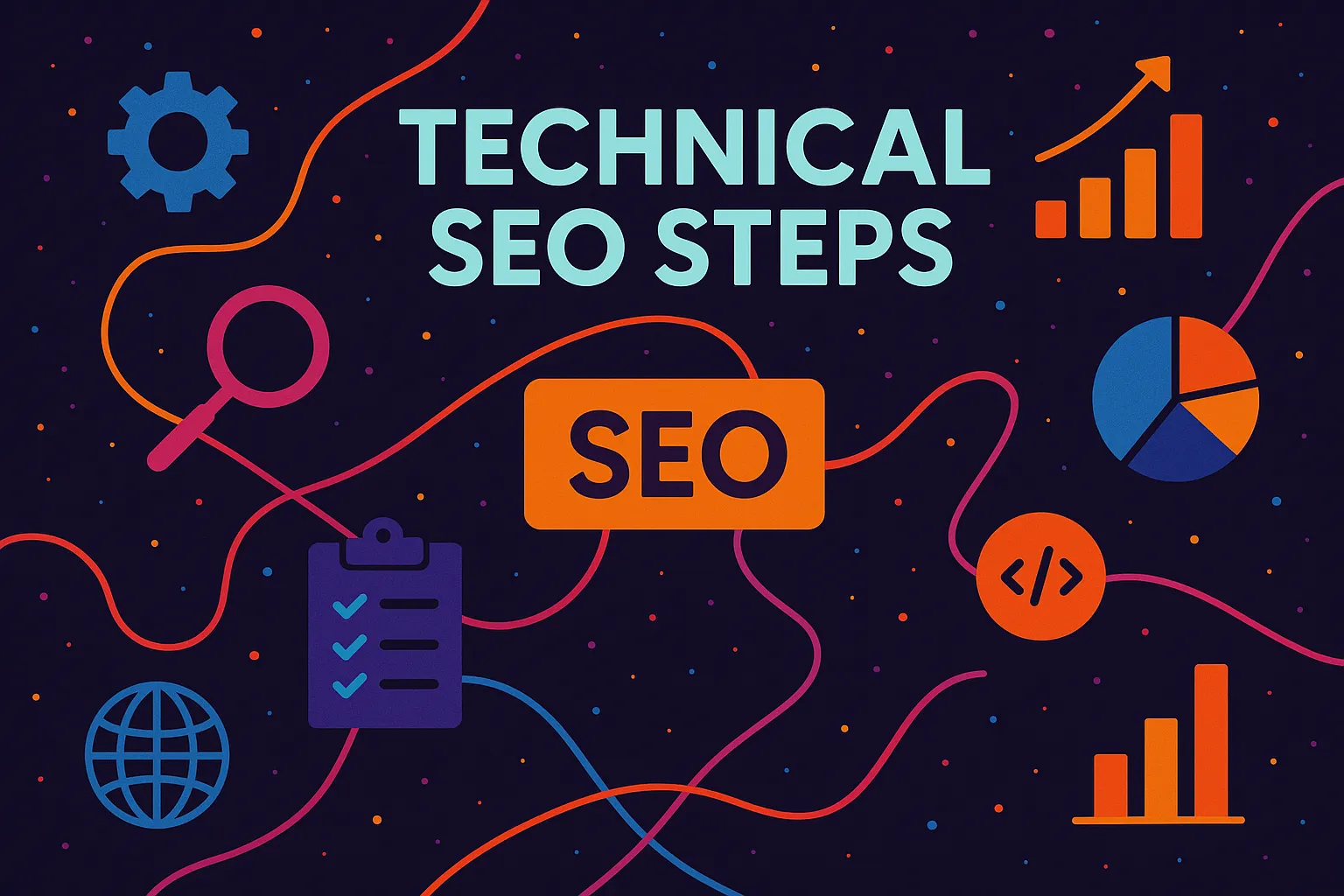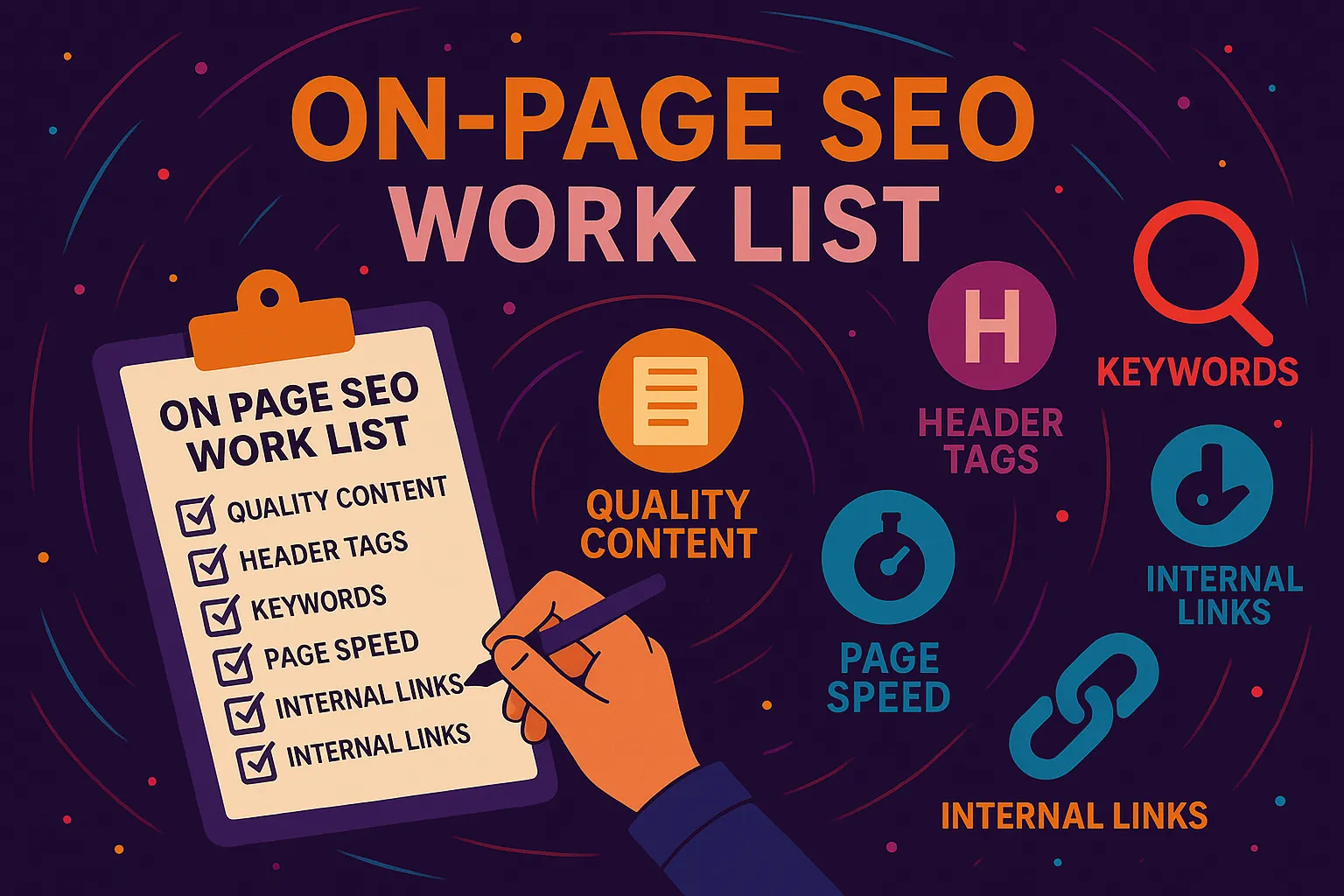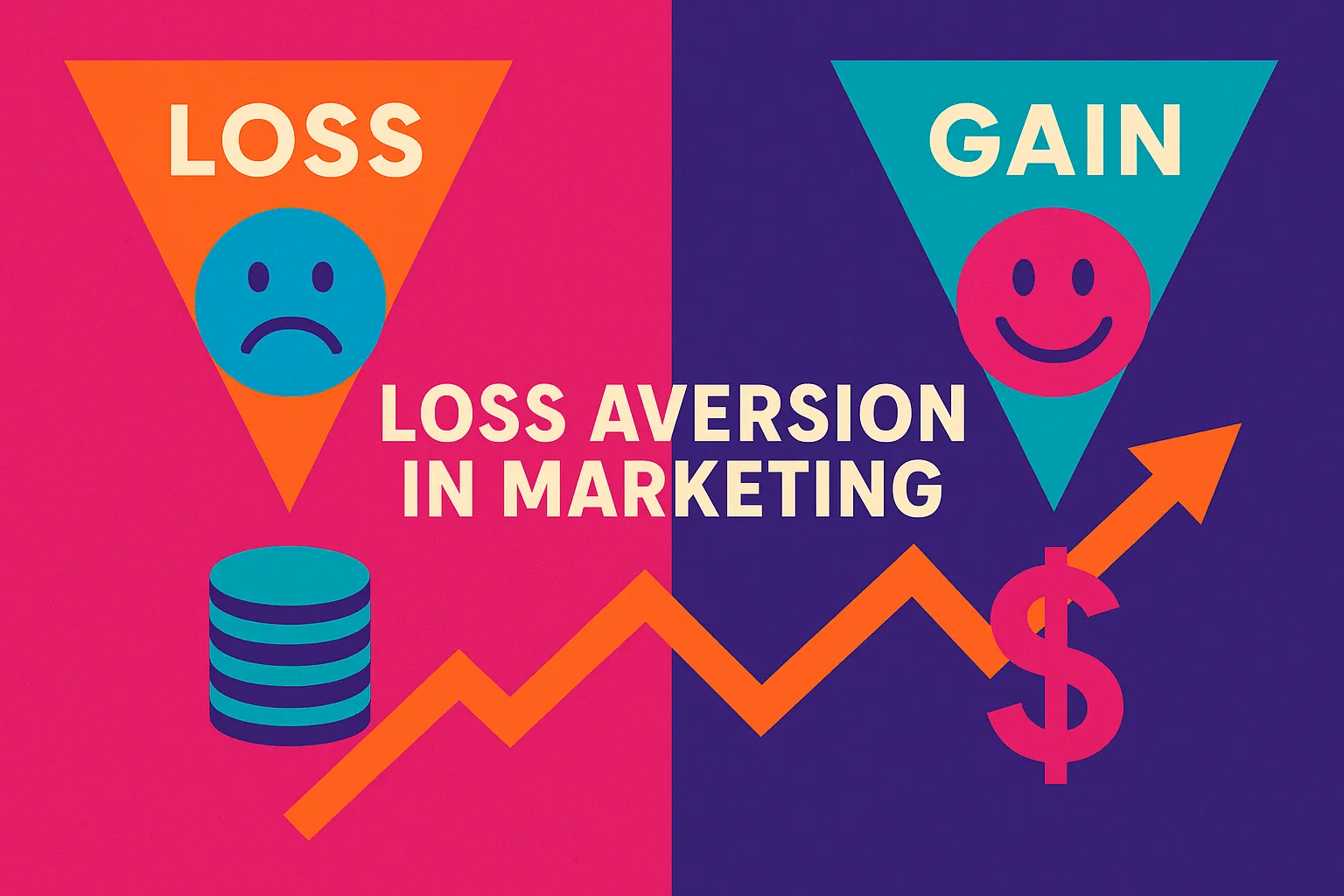What Are Technical SEO Steps?
Technical SEO steps refer to the behind-the-scenes improvements that make your website easier for search engines to crawl, index, and rank. Unlike on-page SEO (which focuses on content) or off-page SEO (like backlinks), technical SEO is all about structure, speed, and performance.
Think of it as the foundation of your house—if it’s shaky, nothing else stands strong.
TL;DR – What You’ll Learn in This Guide on Technical SEO Steps
- What technical SEO really means (in plain English)
- Why technical SEO is critical for Google rankings
- A step-by-step walkthrough of the most essential technical SEO steps
- How to run your own technical SEO audit (with tools)
- Practical advice from over a decade of real-world experience in digital marketing
Why I Care About Technical SEO (And Why You Should Too)
I’ve been in the digital marketing game for over a decade, and if there’s one thing that consistently separates high-performing websites from the rest, it’s how well they’ve implemented their technical SEO steps. Back in 2015, I learned this the hard way.
A client had amazing content—deep guides, sharp visuals, even a solid backlink profile—but their rankings were tanking. Turned out, they had crawl errors everywhere, broken pages, and a sluggish mobile experience.
That was a turning point for me. Ever since, I’ve treated technical SEO as the backbone of every digital strategy. It’s not flashy, but it works.

Step 1: Crawlability & Indexing—Let Google In
Before Google can rank your website, it has to find it. That’s where crawling and indexing come in.
When I audit a site, the first thing I check is whether Googlebot can even access the pages. A robots.txt file, noindex tags, or incorrect sitemap entries can block visibility altogether.
In one case, a startup came to us wondering why none of their blog posts were showing up on Google. The issue?
Their dev team had a “noindex” tag left over from staging. Rookie mistake, but costly.
To avoid that, make sure you:
- Check your site’s indexing status in Google Search Console
- Inspect the robots.txt file for accidental disallow rules
- Submit a clean XML sitemap to Google
- Use canonical tags properly to avoid duplicate content issues
- Avoid using too many redirect chains, which slow Google down
Remember: if Google can’t crawl your site efficiently, it’s game over before it even begins.
Step 2: Site Architecture—Structure Like a Pro
A flat, well-organized structure is one of the most underrated technical SEO steps you can implement. At Vibe Branding, we recommend no page should be more than 3 clicks away from the homepage.
Not only does this help Google crawl your site faster, but it also creates a better experience for users. Our favorite tools to visualize site architecture?
Tool | Use Case | Notes |
Screaming Frog | Crawl and structure mapping | Best for technical audits |
Octopus.do | Visualize site flow | Easy, drag-and-drop UX |
SEMrush | Internal linking & site health | Good for tracking audit progress |
When redesigning a site, we always implement breadcrumb navigation. It’s a win-win: users know where they are, and Google sees a logical hierarchy.
Step 3: Site Speed & Core Web Vitals—Make It Lightning Fast
Slow websites kill rankings—and your user’s patience. According to Google, 53% of users abandon sites that take longer than 3 seconds to load.
That’s why site speed is one of the most impactful technical SEO steps you can work on. I once shaved 7 seconds off a client’s load time just by compressing images and moving from shared hosting to a CDN-backed server.
Want to know if your site’s fast enough?
- Use Google PageSpeed Insights
- Optimize images with tools like ShortPixel or TinyPNG
- Minify CSS, JavaScript, and HTML
- Enable lazy loading for media
- Use a reliable CDN like Cloudflare
And let’s not forget Core Web Vitals—Google’s newer ranking metrics that look at page speed, interactivity, and visual stability. Aim for:
Metric | Target Goal |
Largest Contentful Paint (LCP) | Under 2.5 seconds |
First Input Delay (FID) | Under 100 ms |
Cumulative Layout Shift (CLS) | Under 0.1 |

Step 4: Mobile Optimization—Think Mobile-First
Over 60% of search traffic comes from mobile devices. Google knows this, and it’s why mobile-first indexing is the default now.
That means Google uses your mobile version to decide how to rank your site. When we redesigned a furniture store’s site, we noticed bounce rates were over 80% on mobile.
The reason? Tiny buttons, slow load times, and images that didn’t resize properly.
After a mobile revamp, bounce rate dropped to 22%, and rankings shot up. To nail mobile optimization:
- Make buttons big enough to tap easily
- Use responsive design—not dynamic URLs
- Include viewport meta tags in the head
- Avoid intrusive popups and interstitials
- Test mobile usability in Google Search Console
Step 5: Security & URLs—Clean, Consistent, and Safe
A secure site isn’t just about user trust—it’s a confirmed ranking factor. HTTPS is a must.
In fact, in 2023, we had a client stuck on HTTP, and after migrating to HTTPS, they saw an immediate bump in rankings. No content changes—just the protocol.
But it’s not just about SSL certificates. Your URL structure matters too.
We recommend:
- Clean, keyword-relevant URLs (e.g., /seo/technical-steps)
- Using hyphens instead of underscores
- Avoiding parameters when possible
- Setting preferred domain (www vs non-www)
- And don’t forget to implement 301 redirects properly. If you’re moving pages, consolidate link equity—don’t waste it.
Step 6: Structured Data—Help Google Help You
Structured data, also known as schema markup, helps Google understand what your content is about. It’s one of those technical SEO steps that takes a little setup but pays off big in the form of rich results—like stars, reviews, pricing, FAQs, and more.
We use schema for:
- Blog articles (Article schema)
- Product pages (Product schema)
- Events (Event schema)
- FAQs (FAQPage schema)
The easiest way to implement it? Use the Yoast SEO plugin on WordPress, or use a structured data generator like Merkle’s Schema Markup Generator.
We once added FAQ schema to a single services page and watched our organic CTR jump by 18% in two weeks—no extra backlinks, just better visibility.

Step 7: Technical SEO Auditing—How to Keep It All Running
Even if your site is well-built, technical issues creep in over time. That’s why we perform a technical SEO audit every quarter.
It’s one of those proactive technical SEO steps that keeps our clients ahead of the game. Here’s what we check during audits:
- Broken links (404s and internal link errors)
- Redirect chains and loops
- Orphan pages
- Sitemap errors
- Duplicate content
- Core Web Vitals and speed reports
- Structured data validation
Here’s a quick look at the tools we trust:
Tool | Purpose |
Screaming Frog | Full technical site crawl |
Google Search Console | Error diagnostics + page insights |
SEMrush / Ahrefs | Audit + competitive comparison |
PageSpeed Insights | Core Web Vitals analysis |
If you’re not running these regularly, you’re flying blind.
Step 8: Avoiding the Most Common Mistakes
Over the years, we’ve seen people make the same technical SEO mistakes again and again. Sometimes it’s because they’re rushing a redesign.
Sometimes it’s because no one ever taught them the basics. Either way, here are the biggest offenders:
- Blocking entire directories in robots.txt
- Forgetting to update sitemaps after a site migration
- Using infinite scroll without pagination
- Not updating mobile versions of pages
- Leaving outdated JavaScript that interferes with crawling
One ecommerce brand we helped had 3,000 URLs blocked due to an old robots.txt file. Once we fixed it, their indexed pages doubled—and so did their organic traffic.
Step 9: DIY vs Hiring an Expert—What You Need to Know
So here’s the big question: Can you do all these technical SEO steps yourself?
The answer is… sort of.
If you’re a small business owner with a little time and curiosity, you can absolutely use tools like Google Search Console, Screaming Frog, and SEMrush to get started. Many fixes—like sitemap submission, adding meta tags, or image compression—are straightforward.
But for bigger jobs (like schema markup, advanced redirects, or crawl budget optimization), working with an expert will save you time and headaches. At Vibe Branding, we’ve helped clients of all sizes—from bootstrapped startups to multi-location brands—get their technical SEO dialed in.
And we always start with education. Even if you hire us, you’ll understand exactly what we’re doing and why it matters.
Final Thoughts: Build the Foundation Before You Build the Brand
If I’ve learned anything over the last decade running Vibe Branding, it’s this: the flashiest content and biggest ad budget in the world can’t fix a broken foundation. And in the digital world, technical SEO steps are that foundation.
I’ve seen sites with gorgeous design and viral potential crash and burn in Google Search simply because no one paid attention to crawlability, site speed, or mobile usability. And I’ve seen quiet, content-rich sites explode in rankings after a solid technical SEO overhaul—sometimes with no change to their content at all.
Here’s the thing: technical SEO isn’t just for developers or full-time SEO pros. If you own a website, if you market a product, if you care about visibility—you need to understand these steps.
You don’t need to do everything overnight. You just need to get started.
At Vibe Branding, we live and breathe this stuff. We use our deep technical experience and marketing creativity to deliver results that last—not just temporary wins, but scalable systems built for search.
Whether you want to DIY your audit or bring in a pro team, we’re here to help. So if you’re ready to climb the ranks, build a stronger site, and turn technical issues into search visibility—let’s talk.
We’ll guide you step-by-step, every click of the way.





